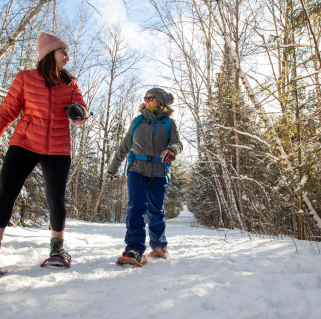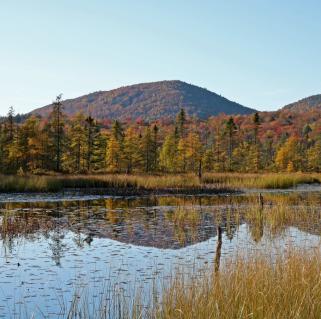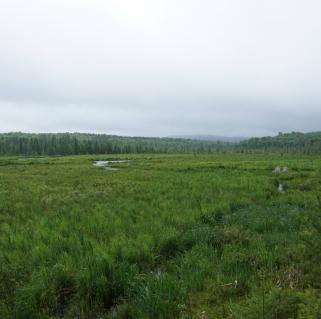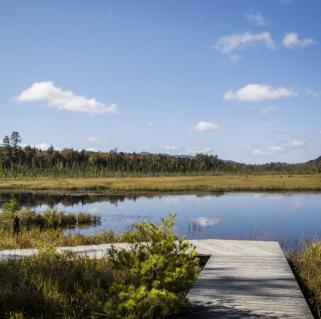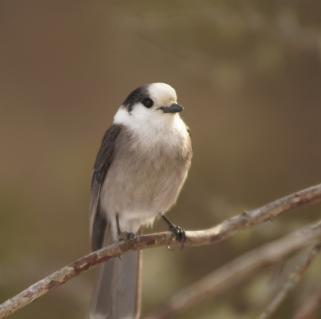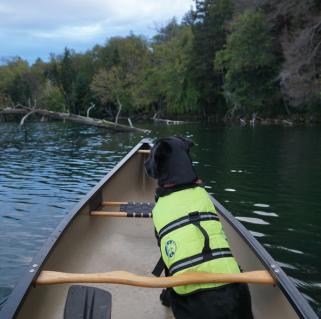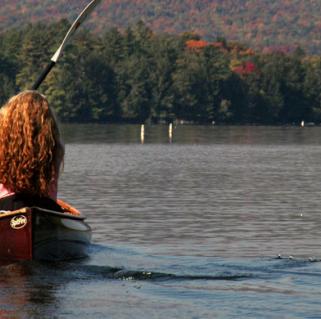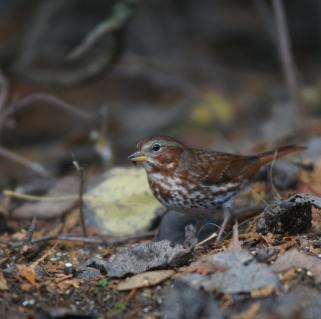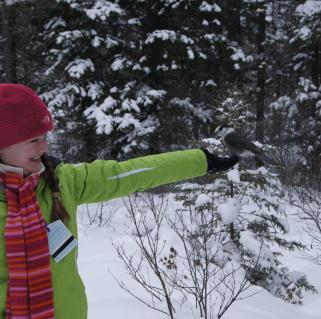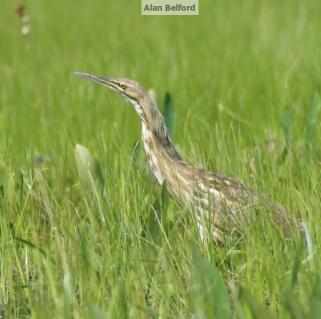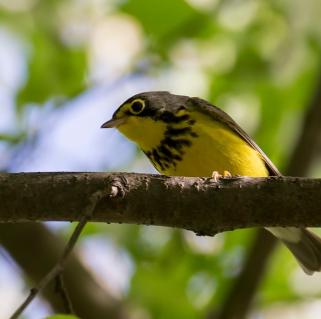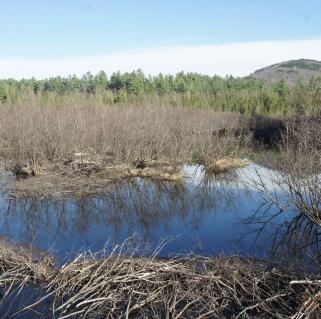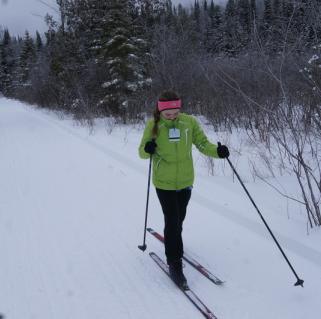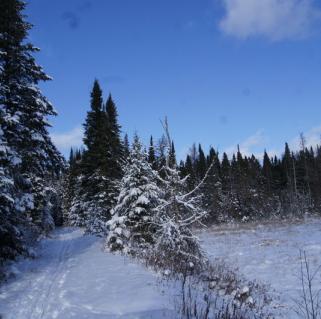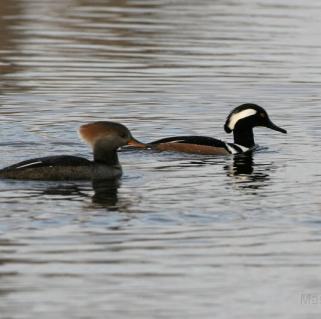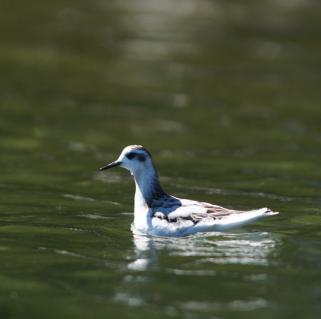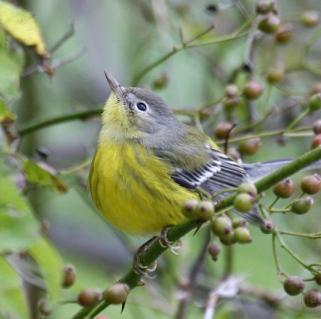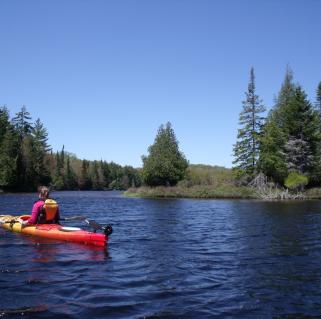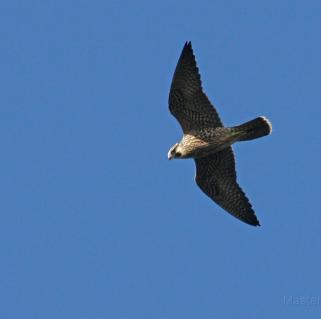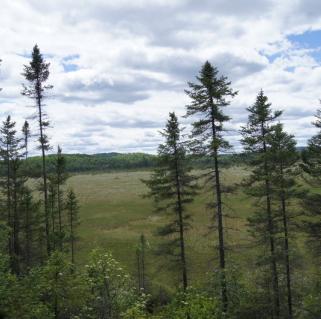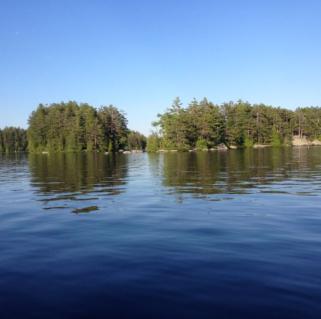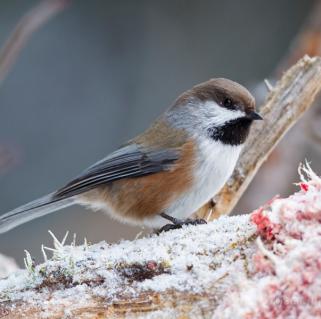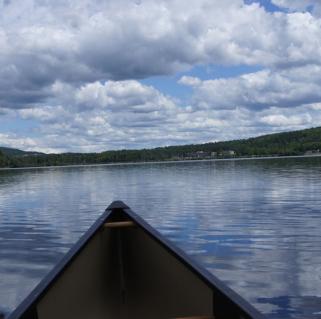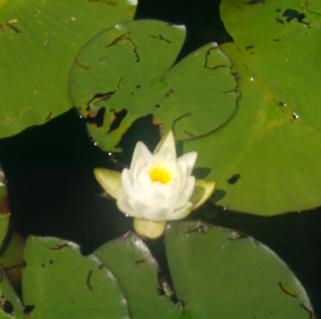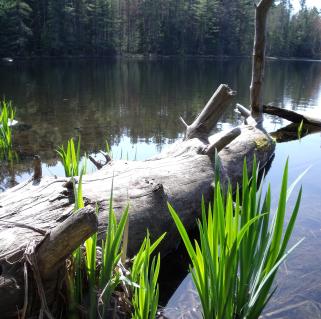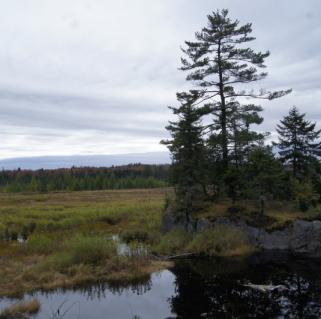Pamela Merritt
July 16, 2017
Of course, no matter how far back a person's roots might go in the Adirondacks, no one's roots go back further than our Native Americans.
The Adirondacks were part of the lands of the Six Iroquois Nations Confederacy. The Mohawks are the Keepers of the Eastern Door, the Senecas are the Keepers of the Western Door, the Onondagas are the Fire Keepers and the Oneidas, Cayugas, and Tuscaroras (admitted into the Confederation in the early 18th century) are the Younger Brothers.
The Six Nations are the oldest living participatory democracy on earth, establishing a way for the Nations to work together for over 800 years. Through the efforts of a group which included Benjamin Franklin and Thomas Jefferson, their pioneering example was instrumental in the creation of the government of the United States.
An excellent way to start exploring this important contribution is to visit a museum dedicated to their history. We have a unique museum near Rainbow Lake that is a wonderful place to visit.
Humble beginnings, grand dreams
The Six Nations Indian Museum began as the extraordinary work of one family: Ray, Christine, and John Fadden.
They opened in the summer of 1954. Even the design of the museum is the architecture of a traditional Haudenosaunee bark house. The Haudenosaunee (ho dee noe sho nee) means People Building a Long House.
There are pre-contact and post-contact artifacts that fill the four rooms that are the indoor section of the museum. There are abundant dioramas, small models, and informative charts. There are wonderful examples of beadwork, pottery, baskets, tools, canoes, feathered headgear, leatherwork, moccasins, and Native clothing.
Every surface has some interesting item on it.
Even people with a good grounding in Native American history will find a mental feast here, because for all that they are such an important group of tribes, the Six Nations has been somewhat neglected in popular culture. There's "Last of the Mohicans" and that is about it for general knowledge.
The Adirondacks were absolutely pivotal in the colonial history of the United States; from Fort Ticonderoga to the contributions of the Six Nations to our system of government, there is a lot of neglected knowledge in these rooms.
The museum welcomes groups and will have entire presentations ready. All Saranac Lake fourth graders have made a trip to Six Nations.
How they lived
I really enjoy the full-sized recreations outside the museum. Paths wind through the outdoor section. Here is an example of the Six Nations version of "meeting space."
I like sitting on the benches and imagining a fire. It's a fine place to sit and contemplate how little has changed in the Adirondacks, thanks to its unique status as a giant state park.
Another favorite is the many examples of campfires and their different uses. There's one configuration for cooking, another for tool making — I didn't realize there were so many. There are also examples of the different dwellings they built.
Some reference materials are about the different displays, while others are words from Native American activists and philsophers. I especially like the expanded version of this quote from Oren Lyons:
I do not see a delegation for the Four Footed. I see no seat for the Eagles. We forget and we consider ourselves superior. But we are after all a mere part of Creation. And we must consider to understand where we are. And we stand somewhere between the mountain and the Ant. Somewhere and only there as part and parcel of the Creation.
This is the part of the museum which is hands-on, and lets you feel the lifestyle, not just view it. True to Adirondack tradition (and in fact they originated it), the Six Nations embedded themselves in the forests and lakes.
This was reflected in our Adirondack Great Camp architecture tradition, which emphasized natural materials and blending into the landscape.
So much to see
The model work is marvelous, with many incredible examples that would be difficult to manage in full size. The dioramas bring the Six Nations to life, while the models of the bark houses let us see details we could not get to in a more realistic scope.
The many painted pictographs were created by Ray Fadden himself. As seen above, the far right is an hand-drawn informational board, the purple belt next to it is has the same design as what is now the Iroquois flag.
These are just a few of the stunning examples of beadwork, from decorative as in footwear and clothing, to accounts of great events, to the many belts that have great symbolic and historic meaning.
I had also not realized the incredible beadwork of the Six Nations until seeing them in person. They were crafted from clamshells. They would form belts which were used as money (the word "Wampum" comes from the Narragansett word for 'white shell beads') and also treaties, history, and special occasions.
While there are only two natural colors, white and purple, they would also develop techniques to stain and paint these beads for more elaborate purposes.
There's incredible art from many different eras, and some of it can even be purchased. With my own strong interest in Native American arts, I find their gift shop one of the most interesting and attractive in the area.
Their displays also create a backstory for our acquisitions. My purple wampum earrings are the genuine article, for instance. Then, I can also tell people about this lovely shell, the quahog, that local Natives used to make their own money.
It's a two-fer.
I've gone several times because there are always more interesting artifacts to look at. It is more than I can usually fit into one visit. It's also a fine place to spend my earring budget. A real summer treat, for the brain and the heart.
The Six Nations Indian Museum is open July through August, from 10 a.m. to 5 p.m., and is closed on Mondays. They are open by appointment to groups during June and September, and into October. Admission is $5 for adults and $3 for children under thirteen.
Sorry, the long houses are not available, but there's plenty of other fine lodging. Not good at campfire cooking? We have delightful dining. Take to the "water highways" the way the Six Nations did with our incredible paddling.
Packages and Promotions
Valid Jan. 21
- Jan. 21
Valid Jan. 21
- Jan. 21
Pet Getaway
Voco Saranac Lake
Your dog deserves an Adirondack getaway too. Book our pet friendly hotel near Lake Placid welcomes every member of your crew. Book our Pet Package...
Valid Dec. 1
- Dec. 1
Valid Dec. 1
- Dec. 1
Linger Longer in Saranac Lake
Best Western Saranac Lake
Linger Longer in Saranac Lake at our supremely located property, Best Western Saranac Lake. Stay 2 nights or more and get 15% off!
Valid Jun. 20
- Sep. 7
Valid Mar. 12
- Jun. 30
Guided Nature Immersions - 10% off for Pre-Season Registration
Adirondack Riverwalking & Forest Bathing
Picture it now...you are wading the Ausable River on a warm summer day, feel the cool water against you, hear the sounds of the birds and the...
Valid May. 1
- Oct. 31
Valid Dec. 6
- Nov. 1
Zip and Whip Expedition
Farmhouse UTVs
Experience Outdoors and Farmhouse UTVs have teamed up to bring your family and friends the Adirondack adventure you've been waiting for....
Valid Jan. 16
- Mar. 31
Valid Jan. 16
- Mar. 31
Hotel Saranac Ski & Stay Package
Hotel Saranac
Stay & Ski Package Stay at Hotel Saranac and Ski Titus Mountain Day or Night Package Your room reservation includes one adult lift ticket....
Valid Jan. 21
- Jan. 21
Valid Jan. 21
- Jan. 21
Stay and Dine
Voco Saranac Lake
Receive a 50 dollar credit per stay to use in our Boathouse Saranac Lake Pub. Enjoy an exceptional dining experience with unparalleled views great...
Valid Jan. 16
- Mar. 31
Valid Jan. 16
- Mar. 31
Hotel Saranac Sled & Spoke Package
Hotel Saranac
Snowmobile Package Hotel Saranac and Sara-Placid Sled & Spoke have partnered so you and a guest can explore dozens of miles of ADK snowmobile...
Valid Jan. 21
- Mar. 31
Valid Jan. 21
- Mar. 31
Titus Mountain Ski Package
Voco Saranac Lake
Enjoy your stay at the award winning voco Saranac Lake which includes two adult lift tickets at Titus Mountain Family Ski Center. Additional...

